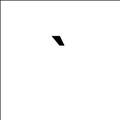Remembering Tagálog, Part 2: Forgotten Rules Concerning Diacritical Signs
The following lesson on the use of diacritical signs when writing Tagálog is taken from:
Lesson 41 of the «Sálitikán ng̃ wikag̃ pag̃bansâ», authored in 1940 by José N. Sevilla y Tolentino, Rosa L. Sevilla de Alvero, and Aurelio Alvero y Sevilla; and printed by Imprenta Sevilla in Manila.
Please note that the original text makes use of the Tagálog letter ( g̃ ) which was expunged from the alphabet in 1940 by Lope Santos y Canseco. He found its similarity to the Spanish letter ( ñ ) to be uncomfortably reminiscent of foreign cultural influence and thus, unworthy for patriotic Filipinos to use.
For the sake of the modern reader unused to reading pure Tagálog, this has been transcribed as ( ng̃ ).
IKAAPAT NÁ PU’T ISANG̃ PAGAARAL
UKOL SA DATIK.
Tinatawag na datik, iyaóng̃ mg̃a tandang̃ pang̃palásulatán na ihinuhudyat upáng̃ matulung̃an ang̃ bumabasà sa wastóng̃ pagbigkás ng̃ mg̃a pantíg at salitâ upáng̃ máibigay ang̃ tumpák na lundô at indayog ng̃ mg̃a salitâ gayón din ng̃ mg̃a yugtô ng̃ mg̃a pang̃ung̃usap sa loób ng̃ siphanay.
Tinátawag na datik ang̃ mg̃a sumúsunód:
Ang̃ mg̃a kudlít na ginágamit sa mg̃a tinig upáng̃ ibigay dito ang̃ kabaguhan ng̃ bigkás na ihinúhudyát noón.
May tatlóng̃ uring̃ kudlít sa Tagálog. Lawi ( ´ ), liwá ( ` ) at saklâ ( ˆ ).
LAWI
Tinátawag na lawi iyaóng̃ kudlít na ipinúputong̃ sa mg̃a tinig na isáng̃ muntíng̃ talihíg na guhit mulâ sa kanan tung̃ong̃ kaliwâ.
Hbw.:
á, é, í, ó, ú.
.
Ang̃ lawi ay isáng̃ kudlít na ginágamit sa lahát ng̃ pantíg na hinúhudyatán ng̃ diín.
Hbw.:
Lakád, buháy, dádayo, daládalá, pagkáligsíligsí, dáratíng̃.
LIWÁ
Tinátawag na liwá iyaóng̃ kudlít na ipinúputong̃ sa mg̃a tinig na isáng̃ muntíng̃ guhit na talihíg buhat sa kaliwâ tung̃ong̃ kanan.
Hbw.:
à, è, ì, ò, ù.
.
Ang̃ liwá ay iyaóng̃ kudlít na namámalagi lamang̃ sa mg̃a hulíng̃ tinig ng̃ salitâ at kagyát nawawalâ ang̃ ang̃kíng̃ tunóg kung̃ sa paraán ng̃ wikà ay mápaloób sa katagâ.
Hbw.:
Talì, tubò, gahì, balà.
.
Kung̃ mápaloób sa bisà ng̃ hulapi:
Talian, tubuan, gahiin, balaan ang̃ katagâ ay nagiging̃ lawig (llana).
.
Kung̃ mápaloób sa bisà ng̃ pagulit:
Talítalì, tubótubò, gahígahì, balábalà, ang̃ sáligan ng̃ pagulit ay nagiging̃ pantíg na lawi sa dakong̃ loób.
SAKLÂ
Tinátawag na saklâ iyaóng̃ kudlít na ipinúputong̃ sa mg̃a tinig na hugis salakot yarì sa pagtatagpô ng̃ lawi at liwá.
Hbw.:
â, ê, î, ô, û.
Ang̃ saklâ gaya rin ng̃ liwá ay sa mg̃a hulíng̃ tinig lamang̃ ng̃ salitâ namamalagi.
Hbw.:
Balî, talâ, bugsô, gibâ.
Kung̃ mápaloób sa bisà ng̃ hulapi:
Baliin, talaán, bung̃giin, gibaín.
Kung̃ mápaloób sa bisà ng̃ pagulit:
Balíbalî, talátalâ, bung̃ng̃úbung̃gô, gibágibâ, ang̃ sáligan ng̃ pagulit ay nagiging̃ pantíg na lawi.
MG̃A PAGSASANAY
1. ¿Anó ang̃ tinátawag na datik? Bumang̃git ng̃ iláng̃ datik na tadhanà ng̃ Palásulután.
2. ¿Anó iyaóng̃ tinátawag na kudlít?
3. ¿Iláng̃ urì ng̃ kudlít ang̃ sa wikang̃ Tagálog?
4. ¿Kung̃ mabago bagá ang̃ tunóg na katagâ ay nagbábago rin ng̃ kahulugan? Bumang̃git kayó ng̃ halimbawà na ipinagbago ng̃ kahulugán dahil lamang̃ sa kudlít.
5. ¿Saán namamalagi ang̃ lawi?
6. ¿Saán namamalagi ang̃ liwá ? ¿ Maari bagáng̃ manatili ang̃ saklâ sa loób ng̃ katagâ?
7. ¿Anó ang̃ kahulugán ng̃ katagáng̃ BAGA kung̃ waláng̃ kudlít na tagláy?
8. Gamitin ninyó ang̃ BAGA sa dalawang̃ siphanay, ang̃ isá ay gamitan ng̃ liwá at ang̃ isá ay ng̃ saklâ.
Isaysáy ang̃ tahasip ng̃ sumúsunód na sáwikain:
“Ang̃ hindî luming̃ón sa pinang̃galing̃an ay di sásapit sa paroroonán.”
References
- Pardo de Tavera, T. (1884). Contribucion para el estudio de los antiguos alfabetos Filipinos. Losana, Spain: Imprenta de Jaunin Hermanos.
- Signey, R. (2005). The evolution and disappearance of the “G̃” in Tagálog orthography since the 1593 Doctrina Cristiana. Philippine journal of linguistics, 36(1-2), 1-10.
- Sevilla, J., Sevilla, R., & Alvero, A. (1940). Sálitikán ng̃ wikag̃ pag̃bansâ. Manila, Philippine Islands: Imprenta Sevilla.
- Wolfenden, E. (1961). A re-statement of Tagalog grammar: Appended with José Rizal’s Nueva ortografía del lenguaje Tagálog. Manila: Summer Institute of Linguistics and Institute of National Language.



